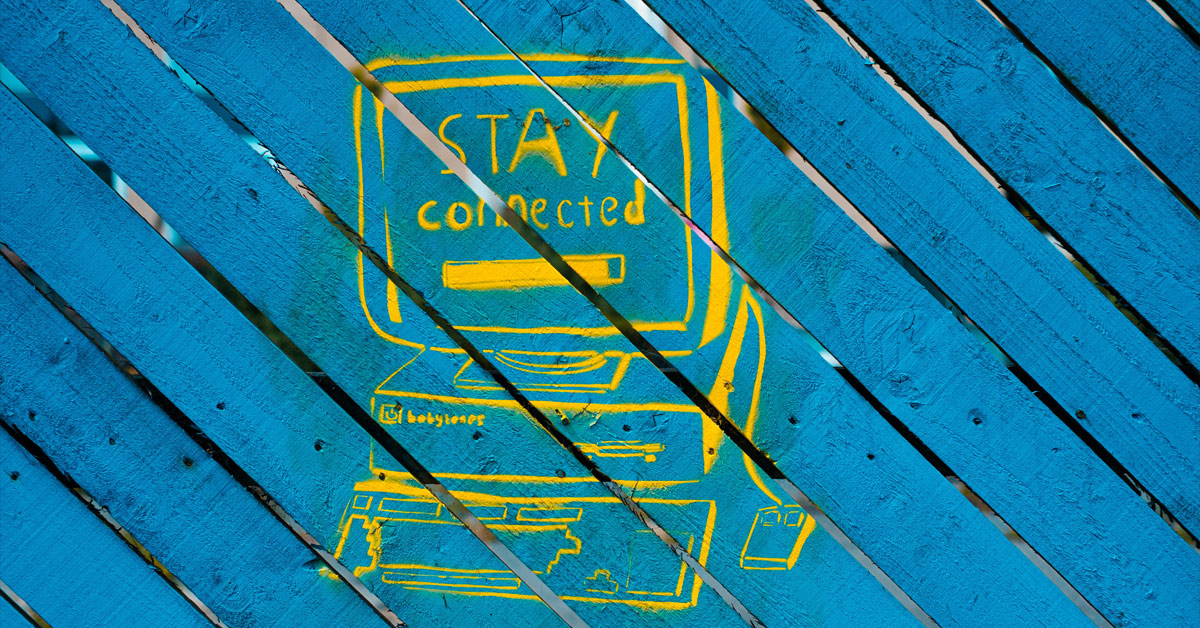4 min read
Connecting the Dots: 7 Steps to a Connected and Engaged Workforce
 Giselle Jenkins
:
July, 08 2024
Giselle Jenkins
:
July, 08 2024

You can create an environment for flourishing through seven key practices that enhance connectivity and equip employees for success, especially when some or all of your team is remote or working in a hybrid environment. Consider what might block an employee’s full ability to experience connection and work at removing barriers. Even small, consistent investments in connection will pay off in employee engagement.
Engaged employees are full of passion and energy for their job. They are committed to the mission of the organization they work for and are willing to put in extra effort to fulfill the mission. Commit to practices that will help grow a flourishing workplace with well-connected, engaged employees.
1. Use Communication Channels Wisely
Technology can facilitate project-focused conversations, information sharing, and informal social connections. However, I’ve seen organizations that use so many different platforms that workers are unsure about where and how to communicate. Clarity on which channels to use for which type of conversations is helpful. If everything is on Slack or Teams or a similar platform, then keep those as primary. Don’t switch around to texting and emailing sometimes in addition to Slack. This burdens employees to have to keep checking all the platforms all the time. Be aware that too many channels, even on one platform, can be overwhelming. Set a reasonable maximum number of channels or people will miss messages.
At the same time, have some fun! Have at least one channel to replicate the “water cooler” talk of old, enhancing relationships and connections. Funny stories, pictures of pets, hobbies, and special occasions worth sharing are all great ways to connect and get to know each other.
2. Core Hours
Most workplaces have employees across multiple time zones. For great connectivity and to minimize conflict, establish core hours. The thought of being super flexible about hours seems attractive, but if working hours don’t overlap, it’s hard to get things done collaboratively. Define expectations for core hours, such as the time to send messages that need a fast response, when meetings are scheduled, and when people are expected to “be at their desk” for a pressing phone call. Clarity in core hours will pay off in reducing conflict, increasing productivity, and ensuring that people have a way to connect and build relationships.
3. Visual Presence
There is no substitute for seeing a coworker in order to get to know them. Keeping a camera on during an online meeting provides natural connectivity and allows for facial responses and personal interactions. It also underscores the importance of the meeting, so people aren’t tempted to multitask during the meeting.
Often meetings are both virtual and in person. To enhance connectivity, make an extra effort to make sure the online people can see and hear what is happening and also can participate fully. During the meeting, be sure to ask for input from those not in the physical room, and also remind the gathered group not to talk over each other.
A sad story I’ve heard about attempted inclusion is when remote employees are sent a Zoom link to “participate” in a social gathering. Sitting at a computer and watching other people eating, drinking, and laughing is isolating, not connecting! If you really want to have an all-team party, send a party box to the remote folks—a few balloons, confetti, and an Uber Eats gift card are simple ways to include and value people.
4. Investing Time
Frequent touchpoints that create a relational connection are the glue that fosters engagement. And these connections take time to develop and deepen.
Consider how your team meeting agendas offer connectivity. Depending on a leader’s style, it’s tempting to dive right into the “real work” and not “waste time” checking in and connecting at the start of a meeting. But time invested in connection is important and creates an environment of caring and engagement. People will want to bring their full selves to work with co-workers and leaders who are showing genuine care towards each other.
Add some fresh ways for people to connect in one-to-one relationships that don’t naturally occur in day-to-day responsibilities. A short-term co-mentor assignment could connect two peers to learn a skill together or research a subject relevant to their work. Examples of this include sharing learnings about using AI at work, building skills in motivating others, or keys to effective presentations. Co-mentors become peers who learn from each other. Investing a couple of hours a month in these experiences can grow friendship and connectivity, and also benefit your organization with subject matter experts and increased skills.
5. Cross-Team Connections
While people in an office together might naturally cross paths with people from other teams, with remote work, these interactions are limited. Look for ways to enhance cross-team understanding and connections, especially with remote employees. Invite leaders and peers from other teams to periodically share updates in your team meeting or at a “brown bag” lunch meeting. Have question-and-answer sessions so your staff understands the people and processes on other teams. More understanding and connection build collaboration and reduce silos. Again, a small investment of time builds connection.
6. Work Environment
Have you spent time understanding what a remote or hybrid worker needs to do their job effectively? During the pandemic, when working from home was a rushed solution, many basic work features slipped in priority.
Are you aware if all of your employees have a workstation that enables them to do their job effectively and efficiently? While giving your staff flexibility in where and how they work is empowering, over the long term, small details can make a difference—even in the physical health of your team. Consider access to ergonomic chairs and desks, appropriate computer monitors, a good internet connection, and even simple office supplies.
Having conversations about workspace and the situation of remote employees also provides a caring connection with a supervisor. Value your employees by showing that you care about providing a quality work environment that meets their needs.
7. Values and Brand
An office is an obvious place to visually demonstrate the values and brand of your organization. So how will that work for remote workers? Consider providing them with a framed version of your values, useful logo items, a meeting background with your logo, a branded cap to wear in meetings, a branded mug, and pictures of them as part of the team. As they do their daily work they will “see” themselves as part of your organization!
Next Steps
Each small, practical gesture to create connections between employees, teams, leaders, and supervisors adds up over time. A caring environment builds trust. People want to feel valued, seen, and heard. Workplaces that offer this atmosphere of connection will see high engagement and retention.
Creating a connected workplace isn’t just top-down, or bottom-up, but all around. It is leaders taking time to ask questions and listen, to notice the contributions of people throughout the organization. It is supervisors who create an environment of caring and pay attention to the specific needs of their employees. It is staff who feel empowered to ask questions and open up about their interests and challenges, and it is visual reminders that they are a core part of the team.
Which of these 7 keys are you going to focus on this month? This quarter? This year?

Working Remotely? 4 Smart Ways to Stay Connected
Working Remotely? 4 Smart Ways to Stay Connected Here we are two months into the pandemic. If you’re working remotely, it’s time to ask, “How well...

The Soundtrack of a Flourishing Workplace: How Music Inspires, Connects, and Energizes Your Team
As a music lover myself, I believe that music is a universal language that has the potential to invigorate the dynamics of a workplace environment....


